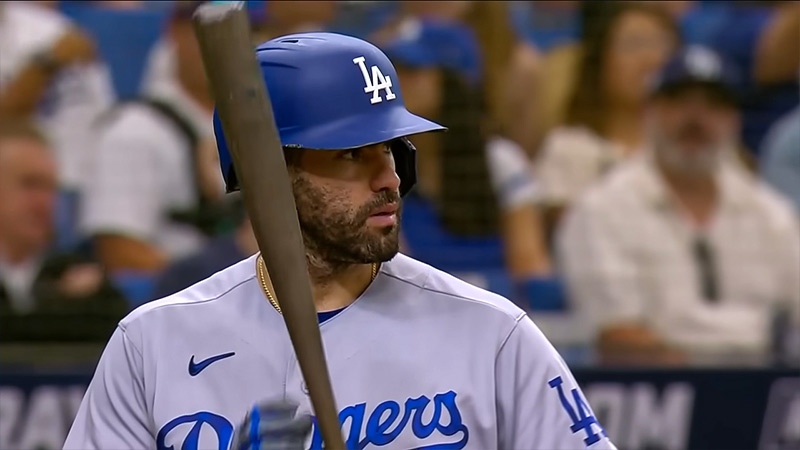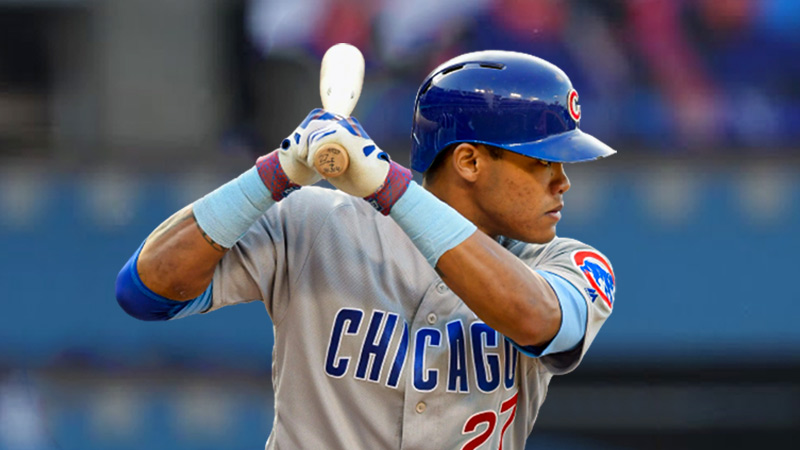The non-tender process in Major League Baseball (MLB) plays a significant role in shaping player movement and the dynamics of the free agent market.
When teams choose not to extend contract offers to eligible players, it opens the door to new opportunities and impacts the landscape of the offseason.
However, I am anticipating that you are reading this content because you want to know about this fact. If yes, I suggest you check the entire content till the end without skipping anything. For sure, you’ll understand the concept of non-tender properly.
Definition and Context Non Tender in Baseball
A non-tendered player refers to an individual whose contract with a team has expired, but they have not yet accumulated the necessary six years of MLB experience to become a free agent.
Instead of extending a contract offer to the player, the team chooses not to retain their services, allowing them to enter the free agent market. This decision is made before a set deadline, typically in early December, and is a significant part of the MLB offseason.
The Non-Tender Process
The non-tender process revolves around the deadline for teams to offer contracts to players. Before the set date, teams must decide whether to tender a contract to their eligible players, including those with less than six years of MLB experience.
If a player is non-tendered, it means the team has chosen not to offer them a new contract, making them a free agent.
Factors Influencing Non-Tender Decisions
Several factors come into play when teams make non-tender decisions. Performance evaluation is a crucial aspect, as teams assess a player’s on-field contributions and determine if their performance justifies a new contract.
Additionally, financial considerations and budget constraints can influence a team’s decision, particularly if they anticipate a high salary demand through arbitration.
Future roster plans also play a role, as teams may opt for alternative options or prioritize specific positions, leading to non-tendering certain players.
Non-tendered Players’ Options
Once a player is non-tendered, they have various options to consider. The most prominent choice is entering free agency, where they can negotiate contracts with other teams that may value their skills and potential contributions.
Alternatively, non-tendered players can sign minor league contracts, providing an opportunity to showcase their abilities and potentially work their way back to the majors.
In some cases, non-tendered players may even re-sign with their former team at a reduced salary or under different contract terms.
Impact on the Offseason and Free Agent Market
Non-tender decisions significantly impact the MLB offseason and the free agent market. The availability of non-tendered players adds depth and options for teams seeking to improve their rosters.
It can also lead to increased competition among teams vying for talented players who are now free agents. The transactions involving non-tendered players shape the landscape of team compositions, with both the players and teams adapting to new opportunities and challenges.
Non-tender Process
The non-tender deadline marks a crucial date in the MLB offseason when teams must make decisions regarding contract offers to eligible players. It typically occurs in early December, allowing teams time to assess their roster needs and determine which players they intend to retain.
The non-tender deadline sets the stage for player movement as it precedes the start of free agency, opening the door for non-tendered players to explore new opportunities.
Deadline for Contract Offers
Before the non-tender deadline, teams must decide whether to extend contract offers to their eligible players. This decision is influenced by various factors, including the player’s performance, salary expectations, team budget constraints, and long-term roster plans.
Teams weigh these factors carefully as they assess the value a player brings to the team and the potential financial implications of offering a contract.
Consequences of Non-Tendering a Player

When a player is non-tendered, it means that the team has decided not to offer them a new contract. As a result, the player transitions from being under the team’s control to becoming a free agent.
Non-tendered players are then free to negotiate and sign contracts with any team in MLB, offering them the opportunity to explore new avenues and potentially secure better financial or playing opportunities elsewhere.
The non-tendering of a player can have significant implications for both the team and the player. For the team, it allows them to allocate resources differently, potentially freeing up payroll space or creating opportunities for other players within the organization.
For the player, being non-tendered can serve as motivation to prove themselves and seek out new opportunities that align with their career goals and aspirations.
Factors Influencing Non-Tender Decisions
In the case of non-tender decisions, a lot of factors should have your confidence. Check them right below.
Performance Evaluation and Its Impact on Contract Offers
When teams assess whether to tender a contract to a player, one of the primary factors they consider is the player’s performance. Evaluating a player’s on-field contributions, such as offensive and defensive statistics, durability, and overall skill set, helps teams gauge the value that the player brings to the team.
Strong performance and consistent production may increase the likelihood of a contract offer, while underperformance or decline in skills could lead to non-tendering.
Financial Considerations and Budget Constraints
Financial considerations are a crucial aspect of non-tender decisions. Teams must navigate budget constraints and allocate their resources strategically.
This includes assessing a player’s salary expectations and determining whether the team can afford to offer them a contract within their financial parameters.
For some teams operating with limited payroll flexibility, non-tendering a player may be driven by the desire to avoid potential high arbitration salaries or to create financial flexibility for other roster needs.
Future Roster Plans and the Role of Non-tendered Players
Teams also consider their long-term roster plans when making non-tender decisions. This involves evaluating the player’s fit within the team’s future strategy and assessing alternative options.
If a team has identified prospects or other players within the organization who can fill the player’s role more effectively or at a lower cost, they may opt to non-tender the player to make room for these alternatives.
Future roster plans and the team’s vision for building a competitive roster are influential factors in non-tender decisions.
Non-tendered Players’ Options
Usually, the non-tender players have a lot of options. To understand the entire fact, you should check the details below.
Free Agency and the Ability to Negotiate With Other Teams
One of the primary options for non-tendered players is to enter free agency. As free agents, these players are free to negotiate and sign contracts with any team in MLB.
They have the opportunity to explore new opportunities, potentially secure better financial terms, or seek out teams that offer a better fit for their skills and career goals.
The free agency provides a platform for non-tendered players to showcase their abilities and attract interest from multiple teams.
Possibility of Signing Minor League Contracts
Non-tendered players also have the option of signing minor league contracts. These contracts allow players to join a team’s minor league system and work their way back to the major leagues.
While not as financially lucrative as MLB contracts, minor league contracts provide an opportunity for players to continue playing and potentially prove themselves to earn a promotion to the majors.
It serves as a developmental path for non-tendered players who may need additional seasoning or opportunities to regain form.
Re-signing With the Former Team at Different Terms
In some cases, non-tendered players may have the opportunity to re-sign with their former team under different terms. This could involve renegotiating a new contract at a reduced salary or agreeing to different contract terms that better align with the team’s budget constraints or long-term plans.
The player and the team may find common ground in restructuring the relationship, allowing for a potential reunion if both parties see value in continuing their association.
Impact on the Offseason and Free Agent Market
This concept of non-tender usually leaves a greater impact on the Offscreen and free agent market. You will find the details here.
Player Movement in the Offseason

Non-tender decisions have a ripple effect on player movement during the offseason. When teams choose not to tender contracts to certain players, those players become free agents and are added to the pool of available talent.
This influx of non-tendered players provides additional options for teams looking to address specific needs or improve their rosters. It can lead to increased competition among teams vying for talented non-tendered players and result in more player transactions during the offseason.
Impact on the Free Agent Market and Player Transactions
Non-tendered players significantly impact the free-agent market. The availability of these players adds depth and options for teams seeking to improve their rosters.
Non-tendered players may be particularly attractive to teams looking for cost-effective solutions or players with untapped potential. The presence of non-tendered players in the free agent market can influence the demand and pricing of players in certain positions or skill sets.
It can also create a domino effect, where the signing of a non-tendered player by one team triggers subsequent moves and transactions by other teams.
Notable Non-Tendered Players and Their Career Paths
There have been notable non-tendered players in MLB history who have gone on to have successful careers. These examples showcase how non-tendering can serve as a turning point in a player’s career.
For instance, a non-tendered player may find a new team where they flourish and exceed expectations, showcasing their talents and proving their worth.
Other non-tendered players may face challenges but use the opportunity to regroup, make adjustments, and find success in their subsequent career paths.
Examining these examples provides insights into the resilience and potential of non-tendered players to rebound and contribute to new teams.
Non-tendered Players and Career Paths
| layer Name | Team Non-Tendered By | Career Path |
| Luke Voit | New York Yankees | Signed with another team and became a productive hitter |
| Domingo Santana | Seattle Mariners | Signed a minor league contract and worked his way back up |
| César Hernández | Cleveland Guardians | Signed with a new team and had a successful season |
| Taijuan Walker | Arizona Diamondbacks | Resigned with the same team and had a career resurgence |
| Maikel Franco | Philadelphia Phillies | Struggled to find a new team and signed a minor-league deal |
| Jonathan Villar | Miami Marlins | Signed with a new team and became an impact player |
FAQs
How do teams decide which players to non-tender?
Teams consider various factors when making non-tender decisions. They evaluate a player’s performance, financial implications, and fit within their future roster plans.
Performance metrics, injury history, salary expectations, and positional depth are some key considerations in the decision-making process.
Can a non-tendered player re-sign with their former team?
Yes, there is a possibility for a non-tendered player to re-sign with their former team, but under different terms. This could involve renegotiating a new contract at a reduced salary or agreeing to modified contract terms that align with the team’s financial constraints or future plans.
However, it ultimately depends on the mutual interest and agreement between the player and the team.
Are all non-tendered players immediately eligible for free agency?
Yes, once a player is non-tendered, they become free agents and can negotiate with any team in MLB. They are no longer bound to their former team and have the freedom to explore opportunities elsewhere.
However, players with less than three years of MLB service time may be subject to waiver claims before becoming true free agents.
Are non-tendered players eligible for salary arbitration?
Non-tendered players who have accrued enough service time and meet the eligibility criteria can file for salary arbitration if they are offered a contract by their former team.
However, if a player is non-tendered, it typically means the team did not offer them a contract for arbitration, and they become free agents.
Can non-tendered players sign multi-year contracts?
Yes, non-tendered players have the ability to sign multi-year contracts with new teams during free agency. The length and terms of the contract depend on the player’s market value, demand, and negotiations with interested teams.
Some non-tendered players may prefer shorter-term deals to showcase their skills and potentially secure better contracts in the future.
Conclusion
Non-tendered players in MLB face a pivotal moment in their careers. The decision to non-tender a player is influenced by performance, finances, and roster plans.
Non-tendered players have options such as free agency, minor league contracts, or potential reunions with their former teams.
These decisions impact the offseason and shape the dynamic free agent market, providing opportunities for player movement and new career paths. Hopefully, you understand the fact well. Have a nice day.







